Types of Houses
Important Point
The types of houses vary from old to new times. Due to turn of people live hood. Now a day’s sum of complications is dependent on purchasing a home.
Like the economic figure, lifestyle of people, modern appearance, kinds of houses, elements, area, natural character, environmental status, etc.
The estate retail has exploded in the last several decades because each people has a designation of a priceless and ultra-modern house. Therefore, people construct their existing homes, renew the current house and purchase a new place as necessary.
Here, the Different types of houses in India are as follows.
- Bungalows
- Flats
- Hunts
- Studio Flats
- Palaces
- Duplex
- Farm House
- Condominiums
- Penthouse
- Eco-friendly house
- Villas
- Detached house
- Row house
Let us know the various types of houses in detail which are as follows.
1. Bungalows
Bungalows are known as cottage houses, two-floor houses, and bungalow structures with a leaning roof, and it is famous as a tiny-cottage kind residence part.
Advantages of Bungalows
Here, the benefits of bungalows are as follows.
- Relate with nature
- Suitable to play for kids
- Simple to care for and clean
- More private
- Comfortable
- In the eventual outlook and renovate
- Outlook addition to the house
- Free to walk around the house
- More trade call
- Suitable for guest
Disadvantages of Bungalows
Here, the cons of bungalows are as follows.
- Insufficient space
- Anxious about safet
- Priceless
- Renew is necessary
2. Flats
Modern architecture has many flats, and the significant benefit of these kinds of buildings is that every apartment offers a penthouse where one or more families cohabit on one ground. Lately, these kinds of housing have been famous all over India.
Advantages of Flats
Here, the pros of flats are as follows.
- Flats are a convenient choice for people who cannot afford monthly home loan payments.
- Flats will free the owner from worries about insurance and home maintenance.
- Flats do not burn a hole in the owner’s pocket as plumbing, electrical, and other common household problems will be taken care of by the landlord.
- The flat’s owner needn’t worry about the repairs like pavement, ceiling, and others.
Disadvantages of Flats
Here, the cons of flats are as follows.
- Many flats which have a lower monthly rent have the very less square footage, which results in a cramped space providing a smaller room to the entire family.
- Most of the flats do not have access to a yard, balcony, or any other private outdoor area.
- Flats have close proximity to neighbors and provide less privacy along with maintenance rules provided by the landlord and also, the owner should seek permission before updating or adding an extra embellishment in an apartment.
- Before buying a flat, one should consider the square footage of each and think about the cost per square foot.
3. Hunts
Hunt is the first house structured by men and is plain and little. The hunt will get into narrowly possible and comfortably possible places that are effortless to structure and commonly found in farming areas.
Advantages of Hunting
Here, the pros of hunting are as follows.
- It controls wildlife populations.
- It is an activity that can be done safely.
- It is a way to improve personal exercise.
- It increases a person’s knowledge about Mother Nature.
- It offers a method of survival.
- It provides a source of revenue.
- It can reduce automotive accidents.
Disadvantages of Hunting
Here, the cons of hunting are as follows.
- It is more of a sport than a necessity of life.
- It can result in animal population reductions.
- It can lead to abusive practices.
- It may cause animals to suffer.
- It may be cost-prohibitive.
Also Read, All About Bathroom Accessories | 28 Different Types of Bathroom Accessories
4. Studio Flats
Now studio flats are widespread, and this house is little but full of luxuries. It is common for younger like entrepreneurs, tastemakers and social butterflies, etc. the studio flat is separated into various cabins but has no division.
Advantages of Studio Flats
Here, the pros of studio are as follows.
- Affordability: Because studio apartments are small, their rental prices are usually much lower than one-bedrooms in the same area. The smaller floor plan also means you’ll save on heating, cooling and electrical costs. If you’re on a tight budget, renting a studio apartment can help keep costs down.
- Privacy:Many renters have to choose between renting their own apartment or sharing an apartment with roommates. Having roommates often means you get more space, but it also means that you lack privacy. This can be tricky, especially if your routines and preferences clash with your roommates. Renting a studio apartment gives you a space of your own and freedom to do as you please.
- Less is more: When you rent a large apartment, you’ll need to invest in furniture to fill it up—which gets expensive quickly. Studio apartments don’t require much furniture to feel complete. Plus, because studio apartments are smaller, they are also much easier to clean.
Disadvantages of Studio Flats
Here, the cons of studio are as follows.
- Short on storage: Many people find that they just can’t fit their belongings in a studio apartment. Most don’t have much storage space, which can leave you feeling very cramped and overwhelmed.
- Entertaining is a challenge: If you like to socialize at home, you might find it hard to do so in a studio. Because of their small footprint, studio apartments don’t leave much room for a large couch or dining room table to accommodate a group of people.
- You’ll have to haul your laundry: A small apartment limits the amount of appliances you can have. As a result, most studios don’t have laundry in-unit. This means that you will likely have to take your laundry to a communal laundry room or a public laundromat.
5. Palaces
India is famous for its legacy site and traditions. Everywhere in India, various impressive palaces will situate in original locations. The sovereigns who lived at an earlier time. Their luxuriant and elegant life is currently active. Today, many castles will change into residences, galleries, flats, travelers’ goals, and hotels.
6. Duplex
The duplex house has twin flats in one flat. It is a multi-dwelling unit. This duplex house commonly portions in the same wall outside. The primary factor of allocating one wall is to protect the home field. But the ground-plan area can vary.
Advantages of Duplex
Here, the pros of duplex are as follows.
- More trending
- More privacy
- Suitable for multi-dwelling unit
- Free to exchange
- Origin of extra income
Disadvantages of Duplex
Here, the cons of duplex are as follows.
- No contract of profit
- More bother because of the same wall
- The operating fee is more expensive
7. Farm House
A farm house is a place far from the city; which major factor is farming production. A few years ago, the upright of the house had rapidly grown.
It is dependable for the suffocate position in calmness. Therefore, landlords invest in land in an urban area made of luxury like the park, lap pool, auditorium, etc., so that more people are fascinated with farmhouses and summer houses.
Advantages of Farm house
Here, the pros of farm house are as follows.
- A farm house provides you greater degree of freedom.
- Ability to design the house as per your wish.
- Future modification of exteriors as per the latest trends and wishes.
- If you have keen interest in gardening then you would have a space to build on your interest or grow your pets.
- More privacy with no more problems with regard to sound seepage.
- You can always expand the space as per requirement in the future when your children grow up.
- You can develop the higher floors when you want to make some additional income through rent.
Disadvantages of Farm house
Here, the cons of farm house are as follows.
- Security is a concern and will come at a significant cost i.e. if you want to keep a watchman or gatekeeper.
- Facilities such as power backup (especially if you want to install generators to run A/C’s etc.) and water supply would be expensive, and managing the same would be a hassle.
- You would need to get access to external clubs and sports facilities. This would be an expensive proposition for e.g. monthly access to a good gym could cost you anywhere between Rs 2500/- to 3500/-.
- Services such as plumbers, electricians etc. would need to be identified and called for at the time of need.
- If you have a job that requires you to be traveling to different cities, then the security of your household goods would be a cause for worry.
- If you are in the metros or in the tier-1 cities where land is scarce and expensive, you may end up owning precious little space, and there will be very little space for gardens and to walk around.
Also Read, 17 Important Points for Furnishing a New Home Checklist
8. Condominiums
The condominium is famous as a condo house compound and will build like apartments. Still, the chief dissimilarity is the personal freehold of flats with all benefits like the park, gym, playground, museum, etc., all space will care below the authority.
Advantages of Condominium House
Here, the pros of condominium houses are as follows.
- Safety purpose
- All space fixed under the care
- Luxuries
Disadvantages of Condominium House
Here, the cons of condominium houses are as follows.
- Luxury for a limited time
- Less privacy
- Pay additional price when harm the public things
- Guideline to use
9. Penthouse
Penthouse is a new version of flats on the top floor, and this moderation is full of materials and comfortable elements. These houses are luxurious and significant other than other flats.
The considerable benefit is private entry to the balcony, which makes the penthouse more beautiful and attach to the grand ceiling interior of the house and is more costly than another house.
Advantages of Penthouse
Here, the pros of penthouse are as follows.
- Apply the top roof balcony
- To give brightness
- To give logo of rich
- More expensive
- To offer a soundless climate
- Personalize inside or outside wall
Disadvantages of Penthouse
Here, the cons of penthouse are as follows.
- High risk for natural disaster
- Little playing area for kids
- In summer it is too hot, and in winter it is too cold
- Far from native due to top floor
Also Read, What Is Building Valuation | Purposes of Building Valuation | Building Valuation Methods
10. Eco-friendly house
Eco-friendly houses are famous as the greenhouse. It is little affected climate house elegant and structure applying that elements and automation which need passive end and decrease the speed of carbon footstep. For water partake used aquaporin reaping method, and the major necessary factor of an eco-friendly house is the innately exposed, so that is less apply of hydrocarbon deposits.
Advantages of Eco-Friendly House
Here, the pros of eco-friendly house are as follows.
- If you are applying hydrocarbon and unused energy, you can transfer and gain extra income.
- Few locations get grants and allotments to make an eco-friendly house.
- Sunlight has developed the fertility and fitness of the dweller.
Disadvantages of Eco-Friendly House
Here, the cons of eco-friendly house are as follows.
- Building elements will not simply find in the nearby shop.
- The primary building is costly
- It needed more time to build.
11. Villas
Villa will commonly pinpoint a particular house, which it finds in various sizes and kinds, from vast villas to palaces. These kinds of the estate have private swimming baths, parks, meadows, walkways, and villas that are more popular because they offer new leafage.
Advantages of Villa
Here, the pros of villa are as follows.
- Privacy
- Freedom
- Landscape and nature
- Rental returns
- Freedom of customization and future modifications
- A well-suited neighborhood
Disadvantages of Villa
Here, the cons of villa are as follows.
- Highly expensive
- Private security required
- May only be available in suburban locations
- Low rental yield
- Less popular in the rental market
- Hard to exit
- High maintenance
Also Read, All About Gabion Wall | What Is the Purpose of the Gabion Wall | Gabion Wall Construction
12. Detached house
A detached house part way that the building does not portion an exterior wall with different houses, and these houses block bed-sitters, separate flat or twin flats, etc., the detached house is self-sufficient in the dweller unit.
Advantages of Detached House
Here, the pros of detached house are as follows.
- Privacy, space, and independence are at a maximum.
- Value usually increases over time, making a house’s purchase more like an investment.
- Storage space allows for more material possessions, whether for hobbies or bulk buys.
Disadvantages of Detached House
Here, the cons of detached house are as follows.
- Maintenance can be costly and time-consuming.
- Cleaning is a bigger job.
- Prices may be higher than other types of homes.
13. Row house
Raw house means o0ffer total of identical types of houses will build in one row. These houses will assume a usual wall among the two designs, and the upgrading of entire houses is similar. Raw house is a stand-alone house.
Advantages of Raw House
Here, the pros of raw house are as follows.
- It is more expensive
- Necessary less care
- More privacy
Disadvantages of Raw House
Here, the cons of raw house are as follows.
- Landlord price is more
- Less independence
- You have a pet ban
- Crowded
Also Read, Types of Renewable Energy Resources
Types of Houses
Common Structural Diffrent Types Of Houses
- Single-Family Homes.
- Semi-Detached Home.
- Multifamily Homes.
- Townhomes.
- Apartments.
- Condominiums (Condos)
- Co-Ops.
- Tiny Home.
Types of House Styles
The following list of the most common home styles in the New Jersey real estate market highlights the state’s diverse housing stock:
- American Foursquare.
- Cabin.
- Cape Cod.
- Colonial.
- Contemporary, Modern and Post Modern.
- Cottage (English)
- Craftsman.
- Farmhouse.
Single Family Detached
A stand-alone house is a free-standing residential building. It is sometimes referred to as a single-family home, as opposed to a multi-family residential dwelling.
Cheapest Type of House to Build Per Square Foot
Cost to build: $150 to $180 per square foot, or $300,000 to $360,000 for a 2,000 square foot home. A one-story ranch home—essentially, a box—built on a slab foundation with a simple roof is one of the cheapest homes to build.
33 Different Types of Houses
Here, the 33 different types of hoses list are as follows.
- The Modern House
- The Townhouse
- The Ranch House
- The Victorian
- The Cottage/English Cottage
- The Apartment House
- The Log Cabin
- The Mansion
- The Colonial
- The Bungalow
- The Farmhouse
- The Manor
- The Neoclassical House
- The Spanish-style House
- The Penthouse
- The Greek Revival
- French Provincial
- Craftsman House
- The Prairie House
- The Tudor House
- Single family home (Detached)
- Condominium
- Chalet
- Tiny Home / Mobile Home
- Tree House
- Container House
- House boat (or floating house)
- Rambler
- Dormitory/dorms
- Duplex
- Igloo
- Terraced House
- Carriage/Coach house
Types of Houses in USA
Here, the different types of houses in USA are as follows.
- Single-Family Home: A single-family home is a detached building built on a lot. They are the most common type of house; around 70 percent of Americans live in single-family home.
- Condo: Condominiums, or condos, are units within larger buildings that share at least one wall with a neighboring unit. You can think of a condo as an apartment, but instead of paying rent each month, you pay a mortgage.
- Townhouse: A townhouse is an attached single-family home that shares a wall with one or two other townhouses. Sometimes called row houses, townhouses often have multiple floors and some outdoor space.
- Multi-Family Home: A multi-family home is a detached building made up of multiple units. Multi-family homes go by many names – duplexes, triplexes, two-flat, twin home, double bungalow, etc. – but they all describe the same kind of building.
- Co-op: Of all the different types of houses, a co-op is perhaps the most unique. Co-ops, or cooperatives, are similar to condos in that your living space is a single unit within a larger building. But unlike a condo, where you would own your unit outright, with a co-op, you own the building collectively with the other tenants.
Types of Houses with Names
Here, the different types of house as per strucures are as follows.
- Apartment: An apartment is part of a collection of similar units in one building structure. An important feature is that you have to rent the place from a landlord.
- Condo: If you like the conveniences that come with an apartment but are looking to own, a condo might be a great fit for you.
- Co-Op: A co-op is also known as a housing cooperative. This type of housing is quite different from the others. When you buy into a co-op, you’re buying a share of the company that owns the building rather than actual property.
- Single-Family (Detached): The key feature of a single-family home is that it’s completely detached from other housing units, unlike condos, apartments or townhomes.
- Tiny Home: Tiny home popularity has boomed in recent years, spurring what’s known as the “tiny home movement.”
- Townhome: A townhouse or townhome is an individually owned dwelling that shares at least one wall with another unit and has its own entrance from the street.
- Cape Cod: The Cape Cod style originated in the 1700s in its namesake city in Massachusetts. These houses are charming but hardy – built to withstand the rough New England winters.
- Colonial: Colonial homes share a lot of similarities with the Cape Cod style. They have a simple, rectangular, symmetrical structure that dates back to the 1600s.
- Contemporary: The contemporary style is often confused with modern, but the two should not be used interchangeably. The term “contemporary” refers to the present, and “modern” refers to a time period that has already passed (e.g., midcentury modern).
- Cottage: Cottage-style houses are often described as cozy and charming. They are typically on the smaller side when it comes to square footage but have a big personality.
- Craftsman: The Craftsman style focuses on the value of handmade, well-constructed architecture. Craftsman houses go against the mass-produced or cookie-cutter home developments – they are typically a horizontal, sturdy build.
- Greek Revival: Greek revival-style homes are some of the easiest to point out due to their impressive columns that emulate those found on the Parthenon and other famous Greek buildings.
- Farmhouse: Put simply, farmhouse-style homes pull inspiration from their namesake buildings for the interior and exterior of the home. There are often tall ceilings, exposed beams, a large front porch, a rectangular layout and a central fireplace.
- French Country: French country-style homes are inspired by the abodes found in the countryside of France, in areas like Provence.
- Mediterranean: Mediterranean-style homes feature elements from Spanish and Italian villas. There is a big focus on indoor-outdoor living, so they’re most popular in areas with temperate weather like California and Florida.
- Midcentury Modern: Midcentury modern design emerged after WWII from the Bauhaus movement. Midcentury mod homes possess a sleek, uncluttered design that meets an appreciation for nature through large windows (connecting you to nature) and a mix of natural and man-made materials.
- Ranch: Ranch-style houses appeared in the 1930s, but their popularity boomed in the 1950s. These homes are typically one story and feature low-pitched roofs, large windows, sliding glass doors, large backyards, open living spaces and attached garages.
- Split-Level: Split-level homes emerged from the ranch-style home design and became popular in the 1950s and ’60s.
- Tudor: The Tudor home style was brought to the U.S. by European-trained architects in the late 1800s, and gained popularity in the 1920s.
- Victorian: Named after Queen Victoria, Victorian homes emerged in the 1830s and were popular through the early 1900s.
Types of Houses in America
Here, the 10 most popular types of houses in america are as follows.
- Cape Cod Houses
- Ranch Houses
- Colonial Houses
- Contemporary Houses
- European Houses
- Tudor-Style Houses
- Queen Anne Houses
- Mediterranean Houses
- Prairie Houses
- Mid-Century Modern Houses
Types of Attached Houses
- Single pen, single cell, or Hall house: a one-room house
- Double pen or double cell: a two-room house
- Hall and parlor house: a two-room house, with one room (the hall) larger than the other (the parlor)
- Central-passage or central hallway\corridor: a three-room house, with a central hallway or passage running front-to-back between the two rooms on either side of the house
- Dogtrot house: divided house with an open, roofed breezeway between the two sections
- Shotgun house: a house that is one room wide and two rooms deep, without a corridor
- Side-hall or side passage: a house with a hallway that runs from front to back along one side
Types of Modern Houses
6 types of modern house styles and the coolest examples we could find are as follows.
- Lodge
- Farmhouse
- Craftsman
- Cottage
- Contemporary
- Ranch
Like this post? Share it with your friends!
Suggested Read –
- Top 10 Tiles Companies in India 2021
- How to Building Construction Process Step by Step
- Top 10 Companies for Environmental Engineers to Work For
- Difference Between Beam and Column | What Is Beam | What Is Column
- What Is a Flight of Stairs | Types of Stairs | How Many Stairs in a Flight | Some Facts About Stairwells
Originally posted 2022-07-31 12:48:03.
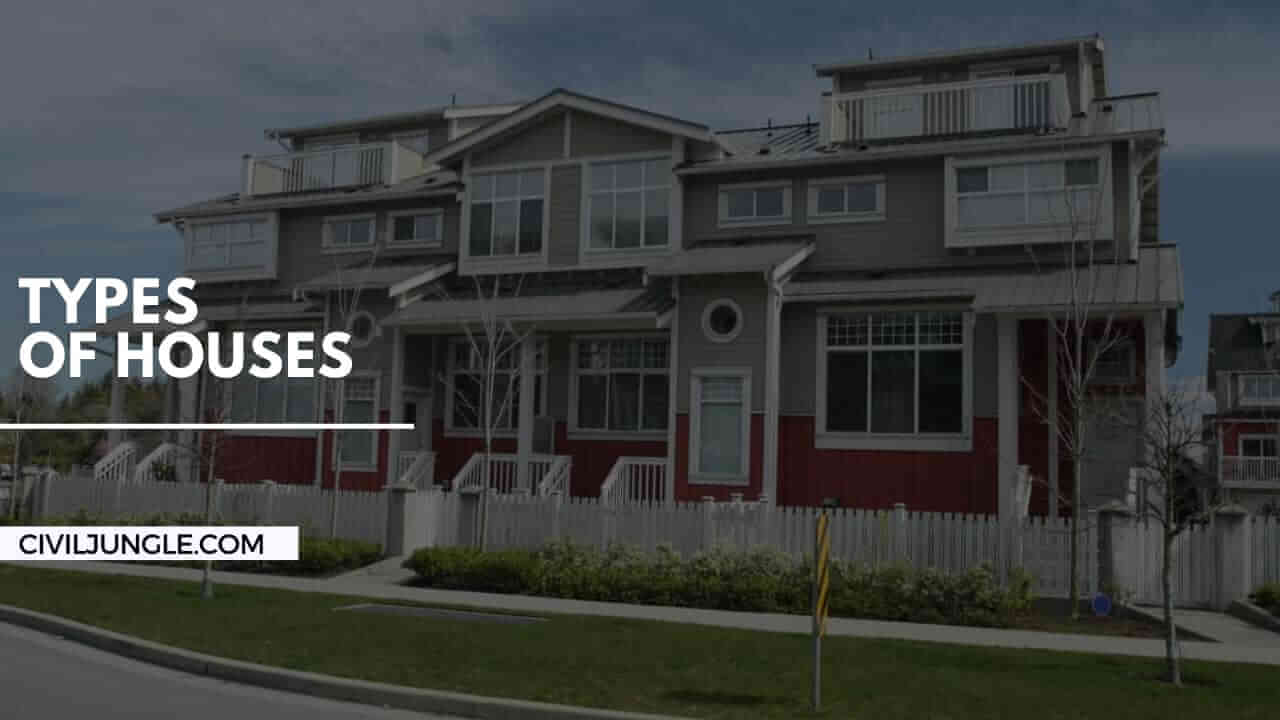
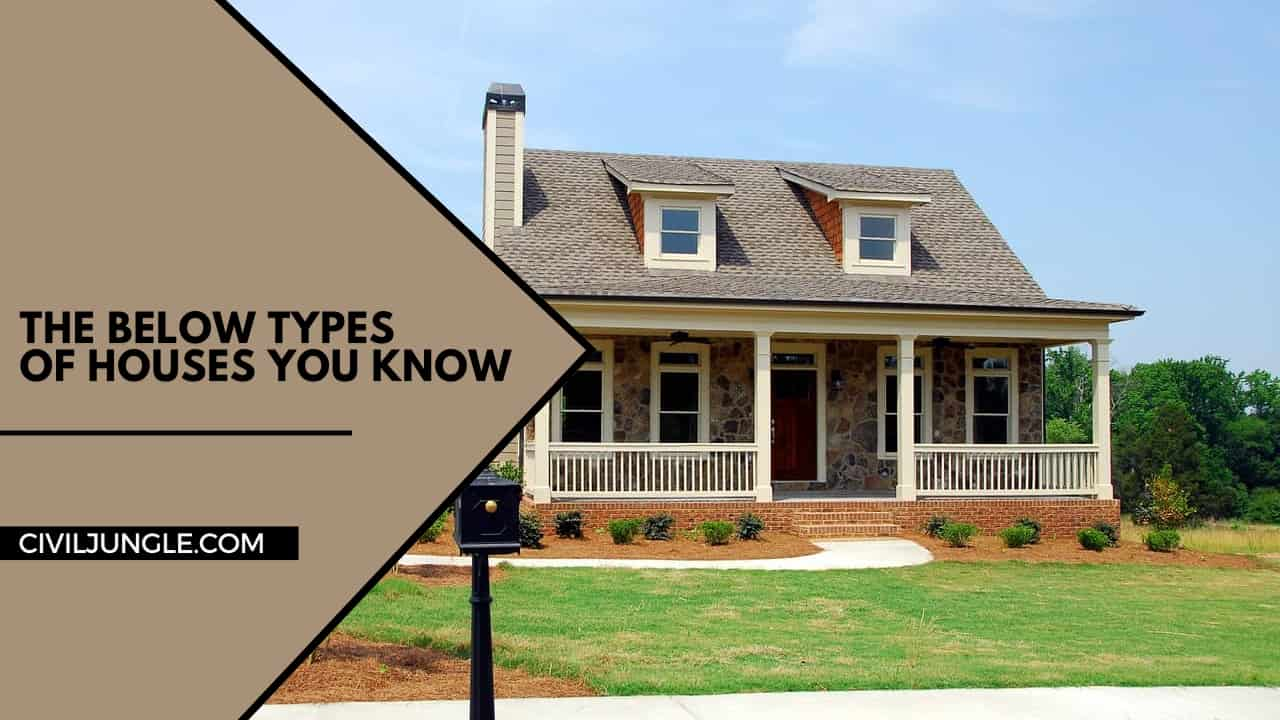

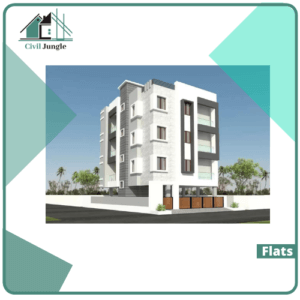
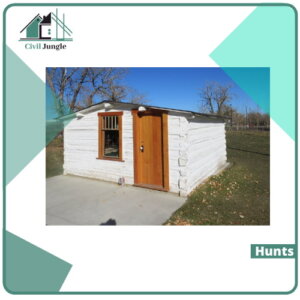
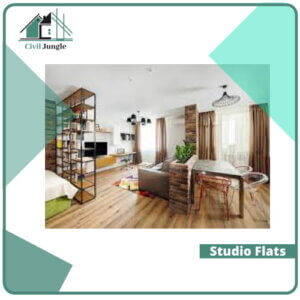
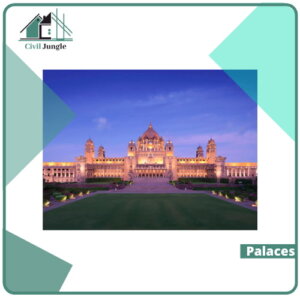
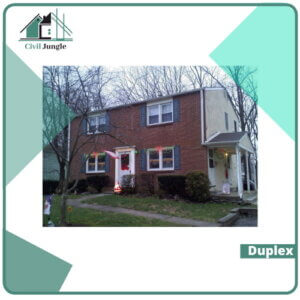
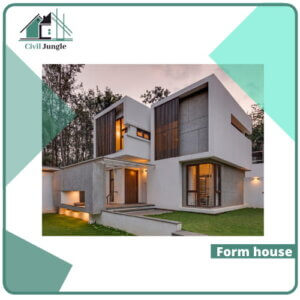
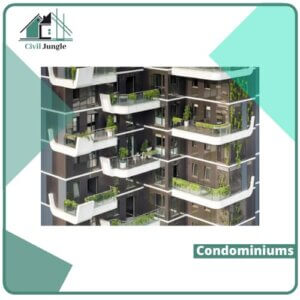

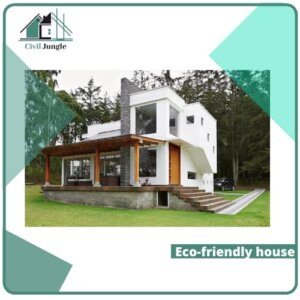
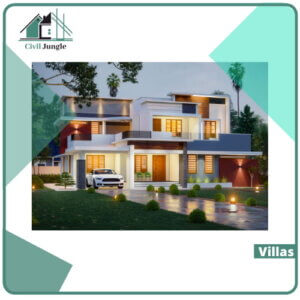
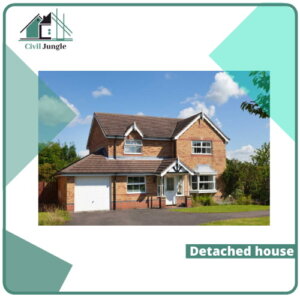
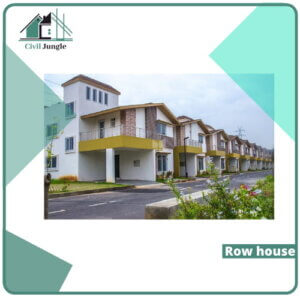

Leave a Reply